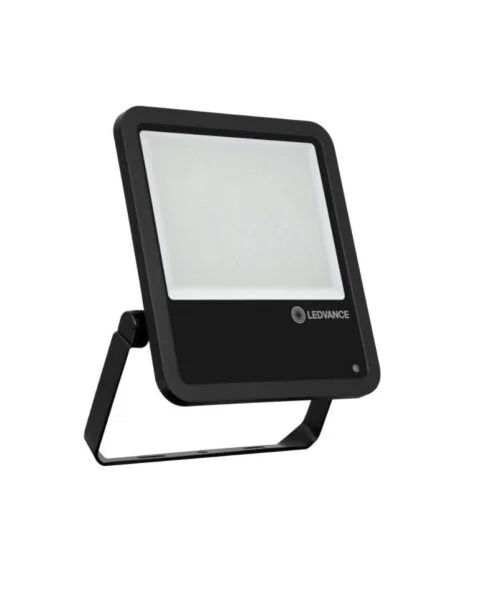Exterior COB Strip
When considering the use of Chip-on-Board (COB) LED strips for exterior applications, several factors must be taken into account to ensure optimal performance, safety, and longevity. COB technology offers a seamless light output without visible dots or hotspots, making it an attractive option for various lighting needs. Here’s a detailed breakdown of what to consider when using COB LED strips outdoors.
1. Weather Resistance and IP Rating
For outdoor use, it is crucial to select COB LED strips that have an appropriate Ingress Protection (IP) rating. The IP rating indicates how well the product can withstand dust and moisture. For example, an IP65 rating means the strip is dust-tight and protected against water jets from any direction. While many COB LED strips are designed for indoor use with lower ratings (like IP20), those intended for outdoor environments should ideally have at least an IP65 rating to ensure durability against rain and humidity.
2. Voltage Requirements
Most COB LED strips operate on low voltage, typically 24V DC. This requires a compatible power supply that can handle outdoor conditions as well. It’s essential to choose a power supply that is also rated for outdoor use if the installation will be exposed to the elements. Additionally, proper wiring techniques should be employed to prevent voltage drop over long runs, which can diminish brightness.
3. Mounting Methods
The mounting method for exterior COB LED strips is another critical consideration. Many products come with adhesive backing suitable for smooth surfaces; however, in outdoor settings where temperature fluctuations may affect adhesion, additional mounting hardware may be necessary. Clips or brackets can provide more secure installation options on various surfaces such as wood, metal, or concrete.
4. Color Temperature and Light Output
COB LED strips are available in various color temperatures ranging from warm white (around 3000K) to cool white (upwards of 6000K). When selecting a color temperature for outdoor spaces, consider the ambiance you wish to create—warmer tones tend to create a cozy atmosphere while cooler tones can enhance visibility and modern aesthetics.
Additionally, the light output measured in lumens per foot is vital for ensuring adequate illumination in outdoor areas. For instance, a strip providing around 300 lumens per foot would be suitable for accent lighting or decorative purposes but may not suffice for task lighting in larger areas.
5. Dimming Capabilities
Many COB LED strips are compatible with dimming systems that allow users to adjust brightness levels according to their needs or preferences. When planning an exterior installation, consider whether you want this flexibility and ensure that both the dimmer and power supply are rated for outdoor use.
6. Lifespan and Maintenance
COB LED technology generally boasts a long lifespan—often up to 65,000 hours—making it a cost-effective choice over time due to reduced maintenance needs compared to traditional lighting solutions. However, regular checks should still be performed on connections and fixtures exposed to harsh weather conditions.
In summary, when selecting exterior COB strip lights, prioritize products with high IP ratings suitable for weather exposure, ensure compatibility with your power supply system while considering voltage requirements, choose appropriate mounting methods based on surface types and environmental conditions, select desired color temperatures based on aesthetic goals and functional needs, evaluate dimming capabilities if needed, and keep in mind the long lifespan of these lights which contributes significantly to their overall value.
Key Features of Exterior COB Strip Lights
- High Output and Efficiency: COB strip lights can contain up to 600 LEDs per meter, producing an impressive output of around 1400 lumens per meter. This high lumen output is achieved while maintaining energy efficiency, as these strips typically consume about 14 watts per meter. The combination of high brightness and low power consumption makes them suitable for various applications, from accent lighting to full-scale illumination.
- Wide Beam Angle: One of the standout features of COB strip lights is their wide beam angle, which can reach up to 180 degrees. This broad dispersion allows for effective lighting coverage in larger areas without the need for multiple fixtures. Such versatility makes them ideal for both residential and commercial settings.
- Color Options: COB strip lights are available in various color temperatures, including Warm White (3000K), Neutral White (4000K), and Cool White (6000K). Additionally, they can be found in RGB configurations that allow for dynamic color changing capabilities, making them perfect for decorative or mood lighting.
- Custom Lengths and Flexibility: These strips are designed to be cut at specific intervals, allowing users to customize lengths according to their needs. They come in standard lengths but can be easily trimmed every few inches along designated cut lines. This flexibility is particularly beneficial for installations in tight spaces or unique layouts.
- Dimming Capabilities: COB strip lights are fully dimmable when paired with compatible PWM dimmers or AC dimming controls from brands like Lutron or Leviton. This feature enables users to adjust brightness levels according to their preferences or requirements, enhancing the overall ambiance of a space.
- Thermal Management: The chip-on-board design not only improves light quality but also enhances thermal management compared to traditional LED setups. Effective heat dissipation is crucial for maintaining performance and longevity; thus, COB technology helps ensure that the strips operate efficiently over extended periods.
- Installation Versatility: These flexible strips can be installed in various environments—both indoor and outdoor—thanks to their durable construction and IP44 rating that provides some protection against dust and water splashes. They can be used in display cases, under cabinets, along hallways, or even outdoors for landscape lighting.
- Power Requirements: COB strip lights typically require a 24V DC power supply for operation. It’s essential to ensure that the power supply matches the total wattage needed based on the length of the strips being used; otherwise, voltage drop may occur over longer runs leading to diminished light output.
- End-to-End Connections: Users can connect multiple strips together using soldering techniques or solderless clamps if necessary; however, it’s important to note that there is a maximum run length of approximately 32.8 feet (two reels). Exceeding this length may result in voltage drop issues affecting performance.
- Applications: Due to their versatility and high-quality light output, COB strip lights are widely used across various applications such as residential lighting (kitchens, living rooms), commercial displays (retail stores), event decorations (weddings), and architectural highlights (buildings).
Conclusion
In summary, COB strip lights offer an innovative solution for modern lighting needs with their superior efficiency, flexibility in installation options, extensive color choices, and excellent thermal management capabilities. Their ability to provide seamless illumination without visible hotspots makes them an attractive choice for both aesthetic enhancements and practical applications across diverse settings.
1. Residential Lighting
In residential environments, COB strip lights are increasingly popular for accent and ambient lighting. They can be installed under cabinets in kitchens to provide task lighting while cooking or preparing food. The seamless light output eliminates harsh shadows, creating a warm and inviting atmosphere. Additionally, they can be used in living rooms to highlight architectural features or artwork, enhancing the aesthetic appeal of the space.
Another common application is in bedrooms where COB strip lights can be placed along headboards or around mirrors to create soft, flattering illumination. Their dimmable nature allows homeowners to adjust the brightness according to their mood or activity, making them suitable for relaxation or reading.
2. Commercial Spaces
In commercial settings such as retail stores and galleries, COB strip lights serve as effective display lighting. Their high Color Rendering Index (CRI) ensures that products appear vibrant and true to color, which is crucial for attracting customers’ attention. Retailers often use these lights to highlight specific merchandise or create visually appealing displays that draw shoppers into the store.
Moreover, COB strip lights are utilized in exhibition spaces where consistent and uniform lighting is essential for showcasing artworks or products without distortion. The ability to control brightness levels also allows curators to set the right ambiance for different exhibits.
3. Task Lighting
COB strip lights excel in providing task lighting in work environments such as offices and workshops. Their focused illumination helps reduce eye strain during detailed tasks like reading documents or working on intricate projects. In workshops, they can be installed above workbenches to ensure adequate visibility when using tools or performing repairs.
Additionally, these lights are beneficial in educational settings where classrooms require bright yet comfortable lighting for students and teachers alike. By installing COB strips along ceilings or walls, schools can create an environment conducive to learning.
4. Outdoor Lighting
The durability and weather resistance of COB strip lights make them suitable for outdoor applications as well. They can be used for landscape lighting to illuminate pathways, gardens, or outdoor seating areas effectively. The wide beam angle of COB strips provides broad coverage without creating dark spots, enhancing safety and aesthetics outside homes or businesses.
Furthermore, these lights can serve security purposes by illuminating entryways and perimeters of properties at night. Their energy efficiency means that they consume less power while providing sufficient brightness for surveillance needs.
5. Architectural Lighting
Architects and designers often incorporate COB strip lights into their projects due to their flexibility and ability to blend seamlessly with various designs. They can be embedded into ceilings or walls to create indirect lighting effects that enhance the overall architectural features of a building.
For instance, using COB strips along coves or recesses creates a dramatic effect by washing walls with light without exposing the source directly. This technique adds depth and dimension to spaces while maintaining a clean aesthetic.


















There are no reviews yet.